ZZLA ransomware uses RSA Salsa20 to encrypt your files
Contents
ZZLA ransomware is a malicious computer virus that originates from STOP/DJVU malware family. It is designed to encrypt all of victim’s files using RSA Salsa20 algorithm, then demand paying a ransom. The virus marks each affected file with .zzla extension and saves _readme.txt file in the containing folder. To illustrate, a file originally called 1.jpg will appear as 1.jpg.zzla after encryption procedure. The ransom note, _readme.txt, contains a brief message from virus’ developers who state that the only way to decrypt file is to purchase ZZLA decryption tool and unique key from them. The price of this software ranges from $490 to $980 and depends whether the victim manages to contact the criminals and pay within 72 hours or not. The criminals suggest contacting them for further details either via manager@mailtemp.ch or helpmanager@airmail.cc emails.
ZZLA ransomware was developed as a virtual extortion tool. Therefore, it locks victim’s files using military-grade encryption algorithms and leaves ransom notes for the victim to find. Once the victim notices that none of the files can be opened, one will surely notice _readme.txt file which is present in every affected folder. This file suggests that the victim has to pay a ransom for cybercriminals in order to decrypt .zzla files. Speaking of encryption, this specific virus encrypts only the first 150 KB of each file, enough to make the file inaccessible yet keep the whole computer attack a short procedure. Because of this technique, some victims might succeed in repairing certain file formats with small data loss at the beginning of the file. For more information, we recommend reading this guide.

The ransom note introduces ZZLA decryption tool pricing which depends on how quickly the victim transfers the money. According to _readme.txt note, if the victim pays the ransom within 72 hours (3 full days), the ransom price will be $490 in Bitcoin. Otherwise, the price rises to $980. The criminals surely want to receive the ransom in cryptocurrency (to be specific, Bitcoin) as this method keeps the transactions anonymous. In addition, the attackers suggest decrypting one small file for free in order to prove that they have working decryption tools.
As advised by FBI and our security experts, paying the ransom is wrong on many levels. We suggest considering the following arguments why it is NOT WORTH PAYING THE RANSOM:
- Once you transfer your money to cybercriminals, it is gone for good. However, it does not guarantee that criminals will complete their side of the deal and provide you with decryption tools.
- Ransomware operators earn millions of US dollars each year. This lures other people to join the criminal operations and distribute more malware worldwide. Please, do not fund their operations by transferring your hard-earned money!
- Paying a ransom might be considered an illegal act in your country.
- Viruses that belong to STOP/DJVU ransomware family such as ZZLA virus run AZORULT Trojan on compromised systems.
What did the ransomware do for your computer?
ZZLA ransomware executes a set of processes on the compromised computer. For example, it runs winupdate.exe, which mimics a Windows update prompt for the victim. It is believed that the attackers display this prompt in order to make the victim believe that computer slowdown is caused by a legitimate operation rather than malware. Once the virus encrypts all files, it also deletes Volume Shadow Copies from the system using this CMD command:
vssadmin.exe Delete Shadows /All /Quiet
The point of running the said command is to prevent the victim from using System Restore Points to restore some of lost data. Next alteration done by this virus is adding a list of domains to Windows HOSTS file and connecting them to localhost IP. This prevents the victim from visiting these domains and attempts to do so wil result in DNS_PROBE_FINISHED_NXDOMAIN error in web browser. This alteration was clearly planned in order to stop the victim from reaching websites that could provide important attack-related information online including virus removal guides. The virus also saves two files on victim’s computer, one called as bowsakkdestx.txt (contains victim’s public encryption key and personal ID) and PersonalID.txt (only includes victim’s identification string).

Victims of this ransomware should beware that STOP/DJVU versions tend to drop AZORULT Trojan on the compromised hosts. This malware is used to allow attacker access victim’s computer remotely and perform various illegal tasks, such as:
- Downloading malware to the computer and running it;
- Stealing Steam, Telegram login credentials;
- Viewing or deleting files on victim’s computer;
- Stealing cryptocurrency wallets;
- Stealing browser cookies, saved passwords, browsing history and more.
We strongly recommend you to secure your computer as soon as possible. Our experts recommend a 2-step rescue plan: remove ZZLA ransomware virus and other malware present on your PC using professional antivirus software such as INTEGO Antivirus. Next, we recommend scanning with RESTORO to repair virus damage on Windows OS files.
Ransomware Summary
| Name | ZZLA Ransomware Virus |
| Type | Ransomware; Crypto-malware; Virtual Extortion Virus |
| Family | STOP/DJVU |
| Encryption type | RSA Salsa20 |
| Previous versions | KAAA, BGJS, BGZQ (find full list here) |
| Version | 314th |
| Extension | .zzla |
| Dropper | SmokeLoader (see VirusTotal details) |
| Damage | The ransomware encrypts all victim’s personal files using RSA Salsa20 encryption algorithms. This makes files inaccessible to the victim. The virus also appends .zzla extension to affected files, drops _readme.txt notes and deletes Volume Shadow Copies from the computer. Additionally, it adds a list of restricted domain names to Windows HOSTS file. |
| Ransom note | _readme.txt |
| Ransom demand | $490-$980 in Bitcoin |
| Distribution | Hides in illegal torrent downloads, cracked software, key generators or tools like KMSPico. |
| Detection names | Trojan:Win32/Glupteba (Microsoft), VHO:Trojan-Spy.Win32.Stealer.gen (Kaspersky), Gen:Variant.Graftor.974954 (BitDefender), ML.Attribute.HighConfidence (Symantec), W32.Trojan.Gen (Webroot) see all detection name variations on VirusTotal |
| Removal | Remove ransomware and related malware from your PC using professional software of your choice. We highly recommend using INTEGO Antivirus. To repair virus damage on Windows OS files, consider scanning with RESTORO. |
REPAIR VIRUS DAMAGE
Scan your system for FREE to detect security, hardware and stability issues. You can use the scan results and try to remove threats manually, or you can choose to get the full version of software to fix detected issues and repair virus damage to Windows OS system files automatically. Includes Avira spyware/malware detection & removal engine.

Ransomware distribution techniques
STOP/DJVU ransomware variants such as ZZLA virus are mainly distributed via illegal torrent-based downloads, although we will discuss general and most popular ransomware distribution methods here as well. Judging from victims’ reports, the actors behind this malware tend to create fake software cracks for most popular programs and upload them to shady websites. Victims have named several software names that they were trying to obtain illegally and doing so led them to a complete file corruption:
- Adobe Photoshop;
- Corel Draw;
- Cubase;
- Adobe Illustrator;
- Windows activation tools such as KMSPico.
If you’re looking for specific software to download securely, make sure you visit legitimate and official sources only. We strongly recommend visiting official software developer’s website and downloading your desired program from there. The price of software licenses is always lower than hefty ransom amounts that cybercriminals demand. In other words, do not risk losing all of your files by trying to download illegal copyright-protected material online as this is also an illegal thing to do.
Ransomware-type viruses are also actively distributed via email spam campaigns. The attackers tend to attach DOCX, XLS, PDF format files to such emails and urge the victim to open them and reply to the email as soon as possible. Some of the reg flags that signal about potentially malicious email are:
- Urgent message tone and suggestions to open attached contents immediately;
- Claims about an invoice or another important document that needs to be reviewed instantly;
- The sender pretends to be someone from a well-known company;
- Spoofed email address.
Geek’s Advice team experts recommend avoiding emails that you did not expect to receive. It can be hard to identify malicious emails especially if you’re not an expert, but our suggestion is to use common sense and avoid opening links or attachments that come with emails you did not wait for. Do not let your curiosity take over and trick you into opening a surprise email. This can only lead to sad consequences such as complete corruption of your files, installation of various malware and so on.
Lastly, we’d like to warn you that operators of other ransomware strains have been noticed uploading fake STOP/DJVU decryption tools to shady websites and luring victims into downloading a second payload. In other words, fake decryption tools can deliver you second virus on your computer and cause double-encryption of your files. ZORAB ransomware is one of such threats that is known for using this horrible distribution technique.
Remove ZZLA ransomware and decrypt your files
We present free ZZLA ransomware virus removal instructions for you to use. Do not forget that the safest way to remove malware from your computer is by running a trustworthy antivirus while in Safe Mode with Networking. In particular, our team recommends using INTEGO Antivirus, then scanning your system with RESTORO to repair virus damage on Windows OS files.
Once you safely remove ZZLA ransomware virus, you should take the following actions:
- Report cybercrime incident to your local authority responsible for handling such events.
- Try to think if you have created a data backup lately. If so, use it to restore at least part of important files.
- Follow the given instructions to decrypt or repair files affected by STOP/DJVU versions.
- We also recommend changing your passwords, especially for sites that you chose to save login credentials for in your browser.
OUR GEEKS RECOMMEND
Our team recommends removing malware using a professional antivirus software.
REMOVE THREATS WITH ROBUST ANTIVIRUS

Get INTEGO ANTIVIRUS for Windows to remove ransomware, Trojans, adware and other spyware and malware variants and protect your PC and network drives 24/7. This VB100-certified security software uses state-of-art technology to provide protection against ransomware, Zero-Day attacks and advanced threats, Intego Web Shield blocks dangerous websites, phishing attacks, malicious downloads and installation of potentially unwanted programs.
Use INTEGO Antivirus to remove detected threats from your computer.
GeeksAdvice.com editors select recommended products based on their effectiveness. We may earn a commission from affiliate links, at no additional cost to you. Learn more.
ZZLA ransomware virus Removal Guidelines
Method 1. Enter Safe Mode with Networking
Step 1. Start Windows in Safe Mode with Networking
Before you try to remove ZZLA ransomware virus virus, you must start your computer in Safe Mode with Networking. Below, we provide the easiest ways to boot PC in the said mode, but you can find additional ones in this in-depth tutorial on our website – How to Start Windows in Safe Mode. Also, if you prefer a video version of the tutorial, check our guide How to Start Windows in Safe Mode on Youtube.
Instructions for Windows XP/Vista/7 users
- First of all, turn off your PC. Then press the Power button to start it again and instantly start pressing F8 button on your keyboard repeatedly in 1-second intervals. This launches the Advanced Boot Options menu.
- Use arrow keys on the keyboard to navigate down to Safe Mode with Networking option and press Enter.
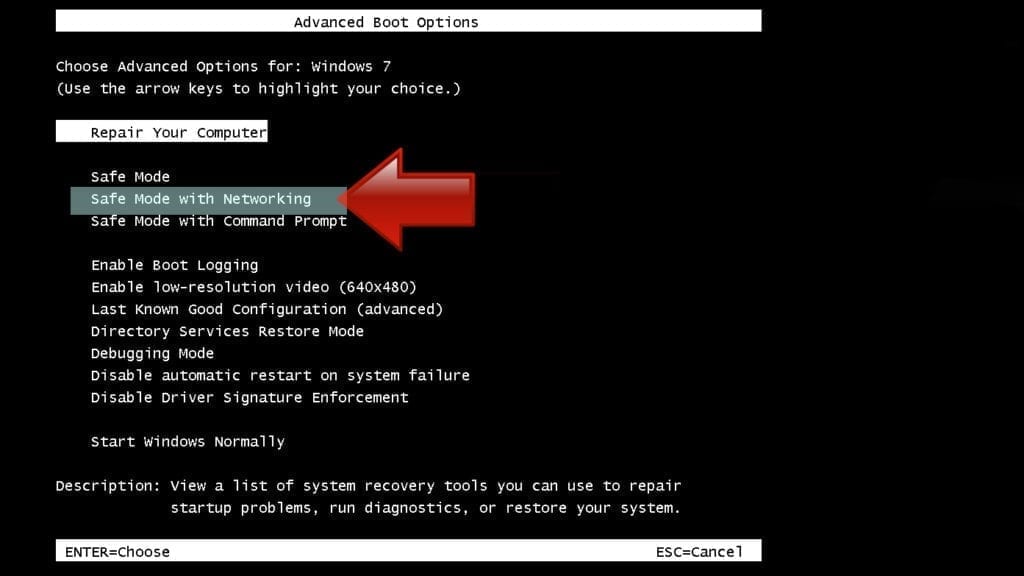
Instructions for Windows 8/8.1/10/11 users
- Open Windows Start menu, then press down the Power button. On your keyboard, press down and hold the Shift key, and then select Restart option.
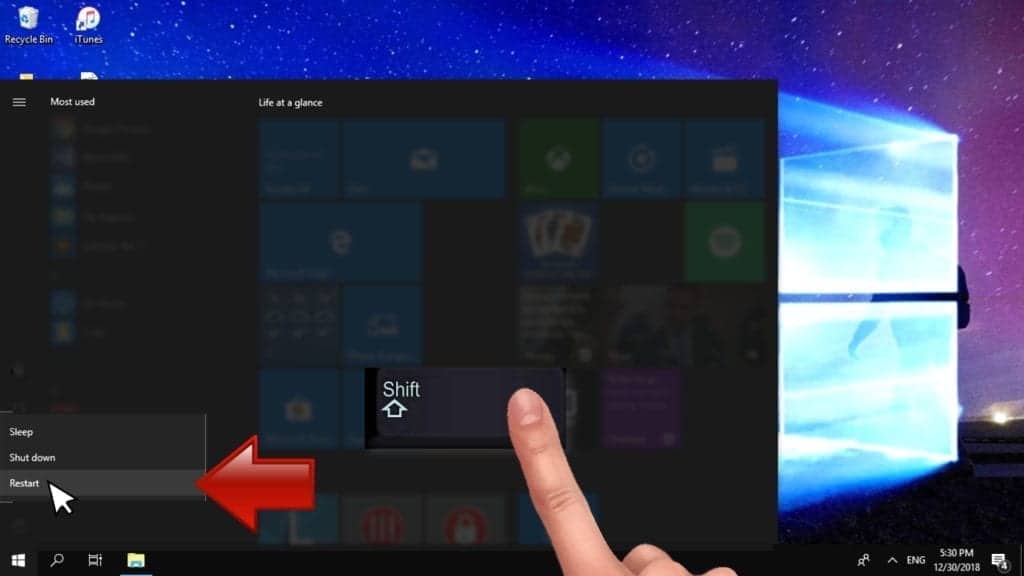
- This will take you to Windows Troubleshoot screen. Choose Troubleshoot > Advanced Options > Startup Settings > Restart. Tip: If you can't find Startup Settings, click See more recovery options.
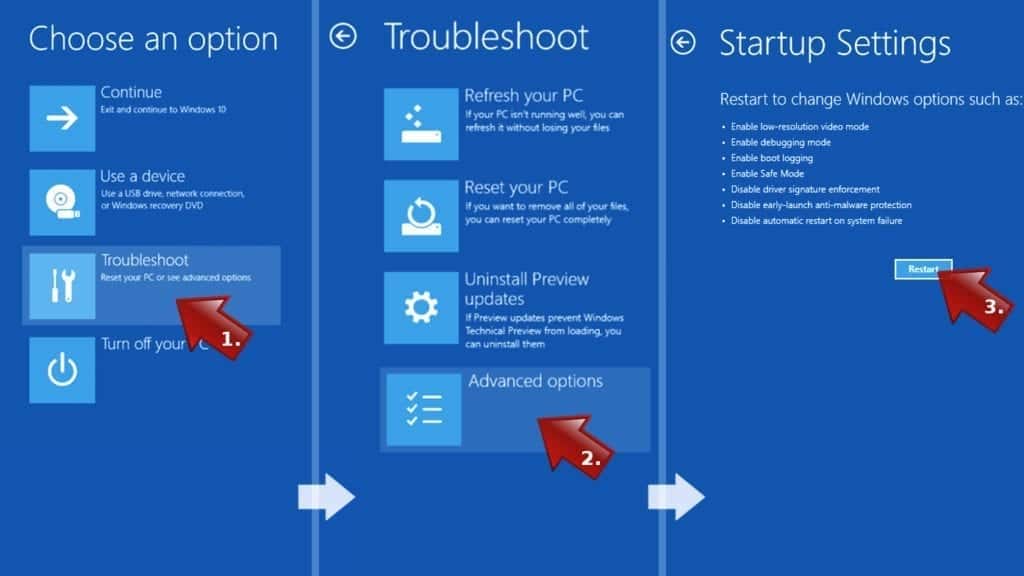
- In Startup Settings, press the right key between F1-F9 to enter Safe Mode with Networking. In this case, it is the F5 key.
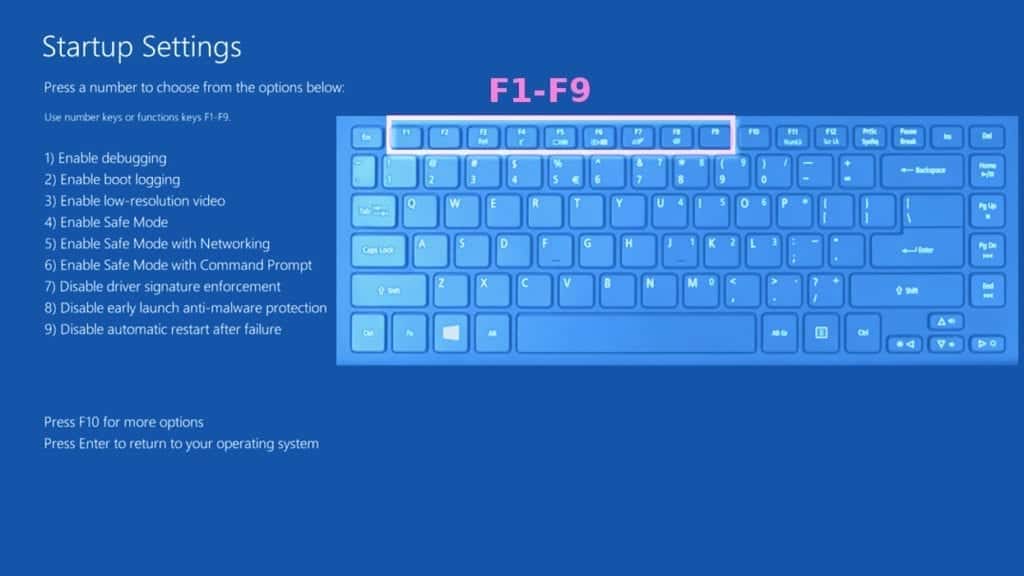
Step 2. Remove files associated with the virus
Now, you can search for and remove ZZLA ransomware virus files. It is very hard to identify files and registry keys that belong to the ransomware virus, Besides, malware creators tend to rename and change them repeatedly. Therefore, the easiest way to uninstall such type of a computer virus is to use a reliable security program such as INTEGO Antivirus. For virus damage repair, consider using RESTORO.
Special Offer
Compatibility: Microsoft Windows
See Full Review
RESTORO is a unique PC Repair Tool which comes with an in-built Avira scan engine to detect and remove spyware/malware threats and uses a patented technology to repair virus damage. The software can repair damaged, missing or malfunctioning Windows OS files, corrupted DLLs, and more. The free version offers a scan that detects issues. To fix them, license key for the full software version must be purchased.
Method 2. Use System Restore
In order to use System Restore, you must have a system restore point, created either manually or automatically.
Step 1. Boot Windows in Safe Mode with Command Prompt
Instructions for Windows XP/Vista/7 users
- Shut down your PC. Start it again by pressing the Power button and instantly start pressing F8 button on your keyboard repeatedly in 1-second intervals. You will see Advanced Boot Options menu.
- Using arrow keys on the keyboard, navigate down to Safe Mode with Command Prompt option and press Enter.
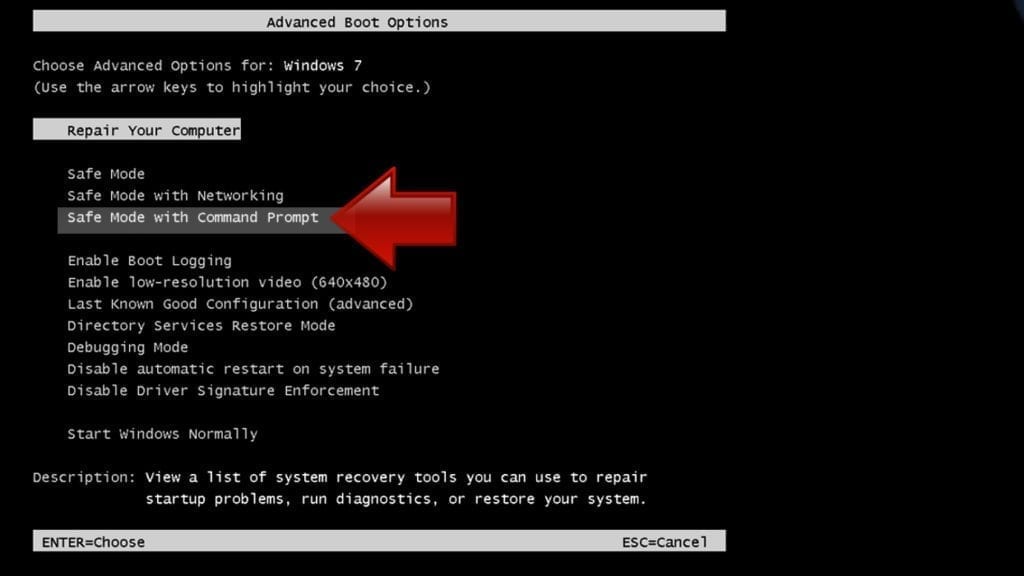
Instructions for Windows 8/8.1/10/11 users
- Launch Windows Start menu, then click the Power button. On your keyboard, press down and hold the Shift key, and then choose Restart option with the mouse cursor.

- This will take you to Windows Troubleshoot screen. Choose Troubleshoot > Advanced Options > Startup Settings > Restart. Tip: If you can't find Startup Settings, click See more recovery options.

- In Startup Settings, press the right key between F1-F9 to enter Safe Mode with Command Prompt. In this case, press F6 key.

Step 2. Start System Restore process
- Wait until system loads and command prompt shows up.
- Type cd restore and press Enter, then type rstrui.exe and press Enter. Or you can just type %systemroot%system32restorerstrui.exe in command prompt and hit Enter.
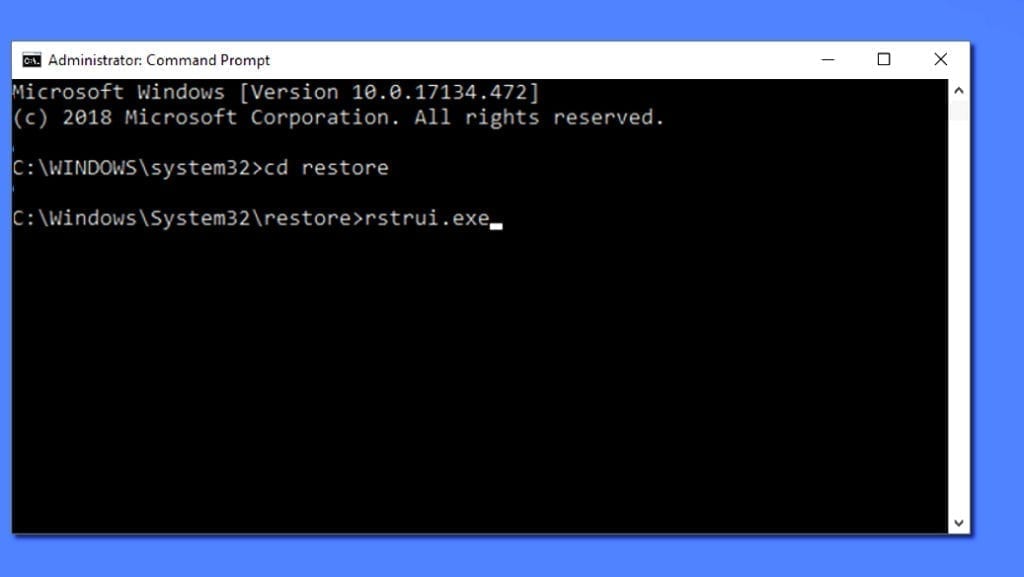
- This launches System Restore window. Click Next and then choose a System Restore point created in the past. Choose one that was created before ransomware infection.
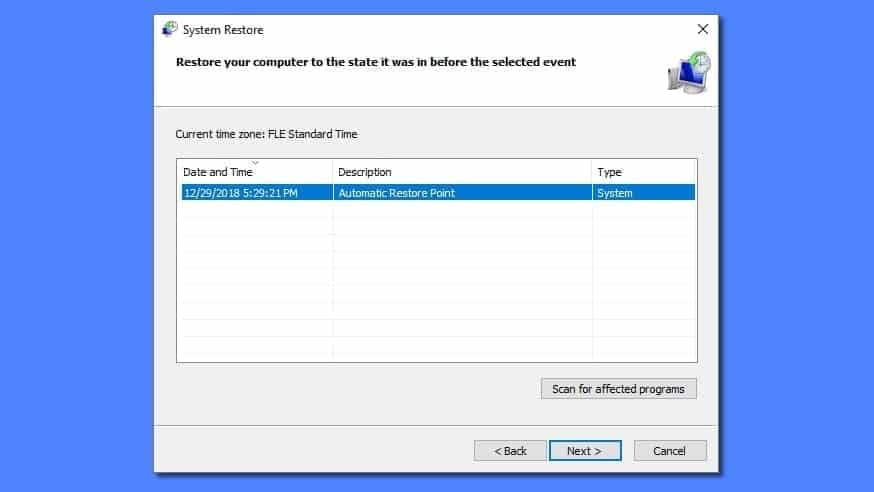
- Click Yes to begin the system restoration process.
After restoring the system, we recommend scanning the system with antivirus or anti-malware software. In most cases, there won't be any malware remains, but it never hurts to double-check. In addition, we highly recommend checking ransomware prevention guidelines provided by our experts in order to protect your PC against similar viruses in the future.
Alternative software recommendations
Malwarebytes Anti-Malware
Removing spyware and malware is one step towards cybersecurity. To protect yourself against ever-evolving threats, we strongly recommend purchasing a Premium version of Malwarebytes Anti-Malware, which provides security based on artificial intelligence and machine learning. Includes ransomware protection. See pricing options and protect yourself now.
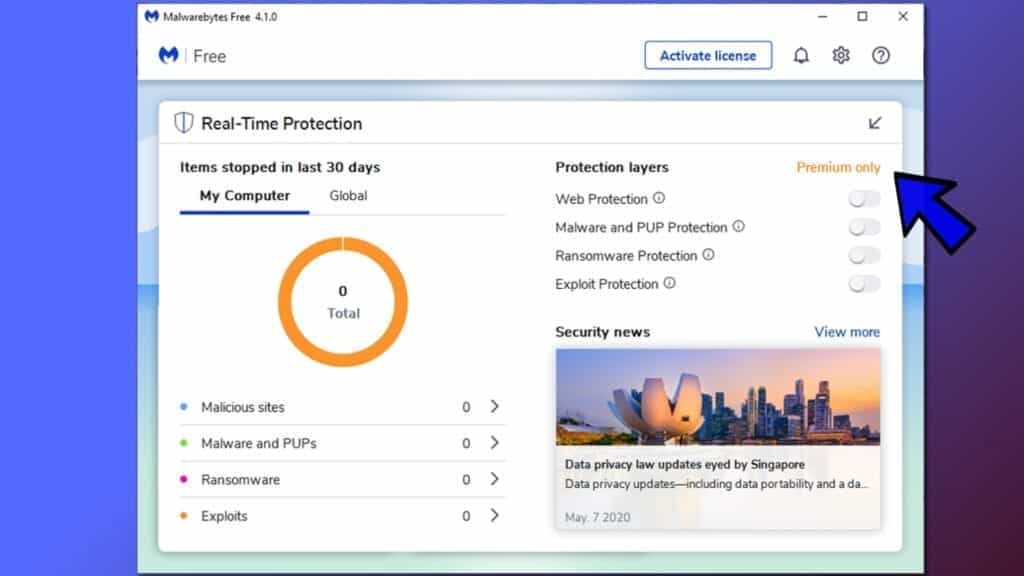
System Mechanic Ultimate Defense
If you're looking for an all-in-one system maintenance suite that has 7 core components providing powerful real-time protection, on-demand malware removal, system optimization, data recovery, password manager, online privacy protection and secure driver wiping technology. Therefore, due to its wide-range of capabilities, System Mechanic Ultimate Defense deserves Geek's Advice approval. Get it now for 50% off. You may also be interested in its full review.
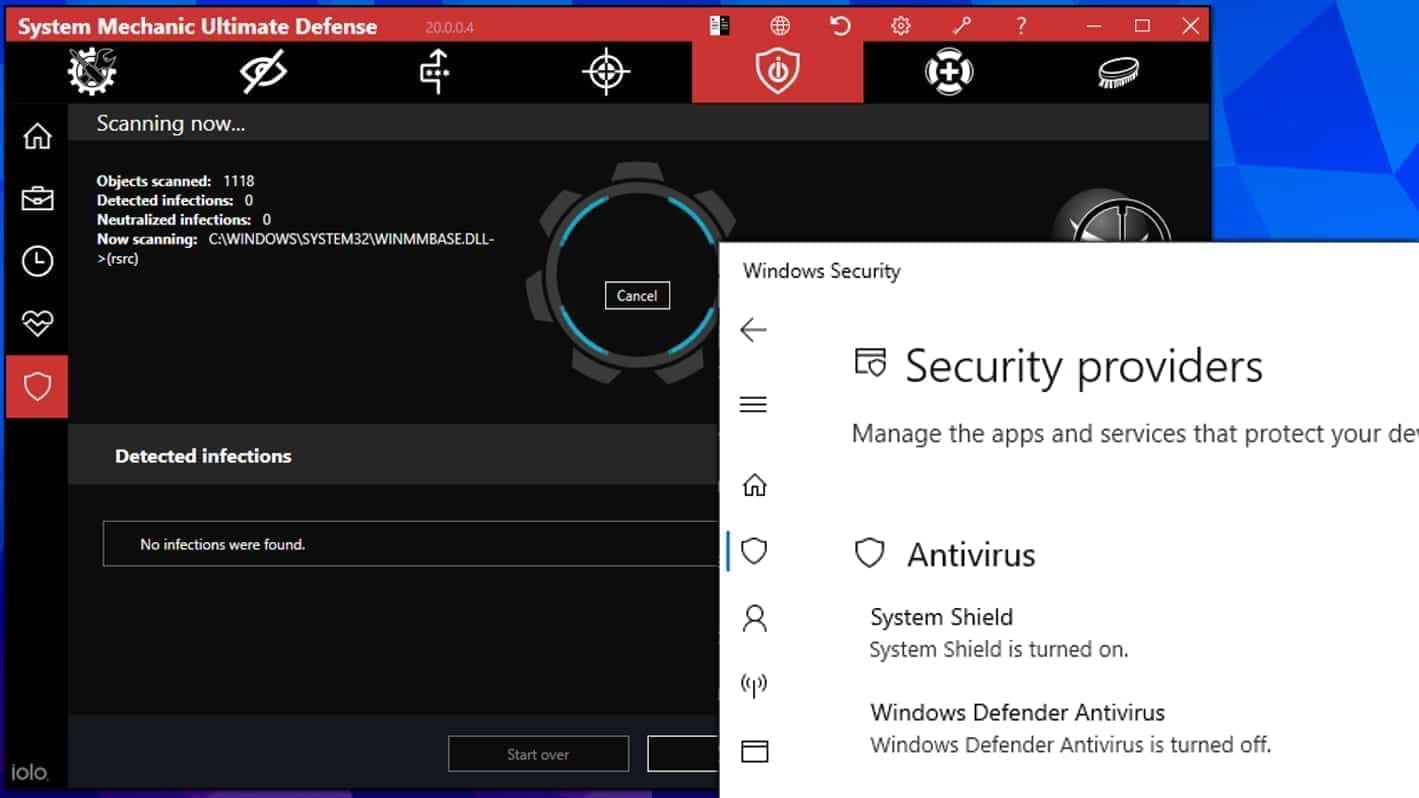
Disclaimer. This site includes affiliate links. We may earn a small commission by recommending certain products, at no additional cost for you. We only choose quality software and services to recommend.
Decrypt ZZLA files
Fix and open large ZZLA files easily:
It is reported that STOP/DJVU ransomware versions encrypt only the beginning 150 KB of each file to ensure that the virus manages to affect all files on the system. In some cases, the malicious program might skip some files at all. That said, we recommend testing this method on several big (>1GB) files first.
- Create a copy of encrypted file to a separate folder using Copy > Paste commands.
- Now, right-click the created copy and choose Rename. Select the ZZLA extension and delete it. Press Enter to save changes.
- In the prompt asking whether you want to make the changes as file might become unusable, click OK.
- Try opening the file.
STOP/DJVU decryption tool usage guide
STOP/DJVU ransomware versions are grouped into old and new variants. ZZLA ransomware virus is considered the new STOP/DJVU variant, just like KAAA, BGJS, BGZQ (find full list here). This means full data decryption is now possible only if you have been affected by offline encryption key. To decrypt your files, you will have to download Emsisoft Decryptor for STOP DJVU, a tool created and maintained by a genius security researcher Michael Gillespie.
Note! Please do not spam the security researcher with questions whether he can recover your files encrypted with online key - it is not possible.
In order to test the tool and see if it can decrypt ZZLA files, follow the given tutorial.
- Download the decryption tool from Emsisoft.
- Click the little arrow next to your download and choose Show in Folder.
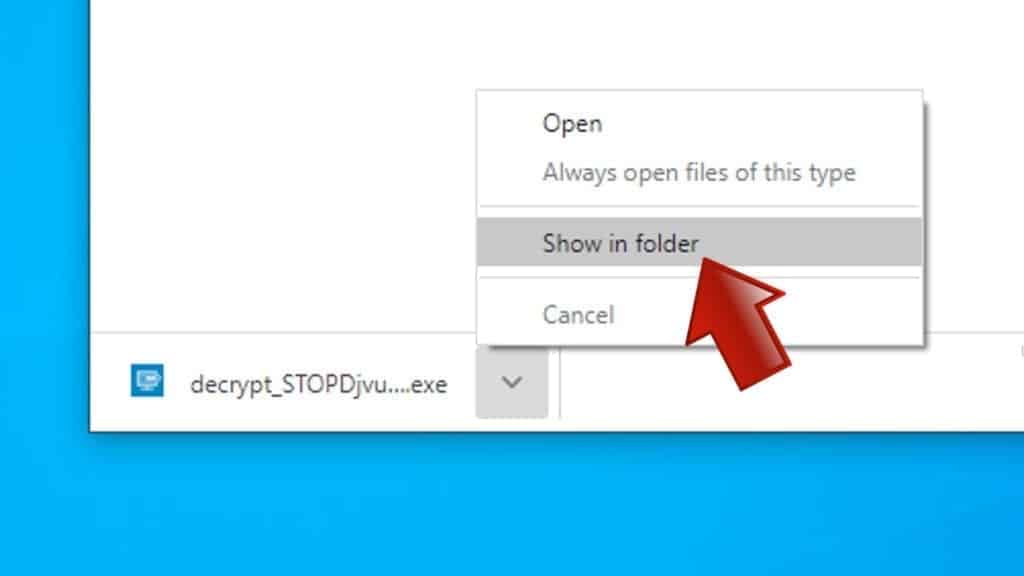
- Now, right-click the file and choose Run as Administrator. If asked, enter administrator's password.
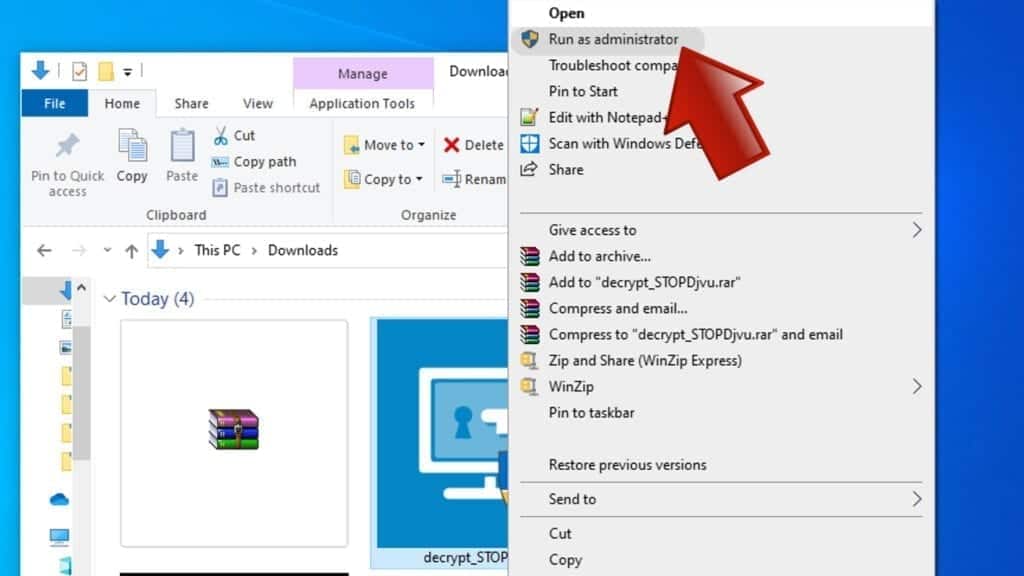
- In UAC window, click Yes.
- Click Yes to agree to software terms in both windows.
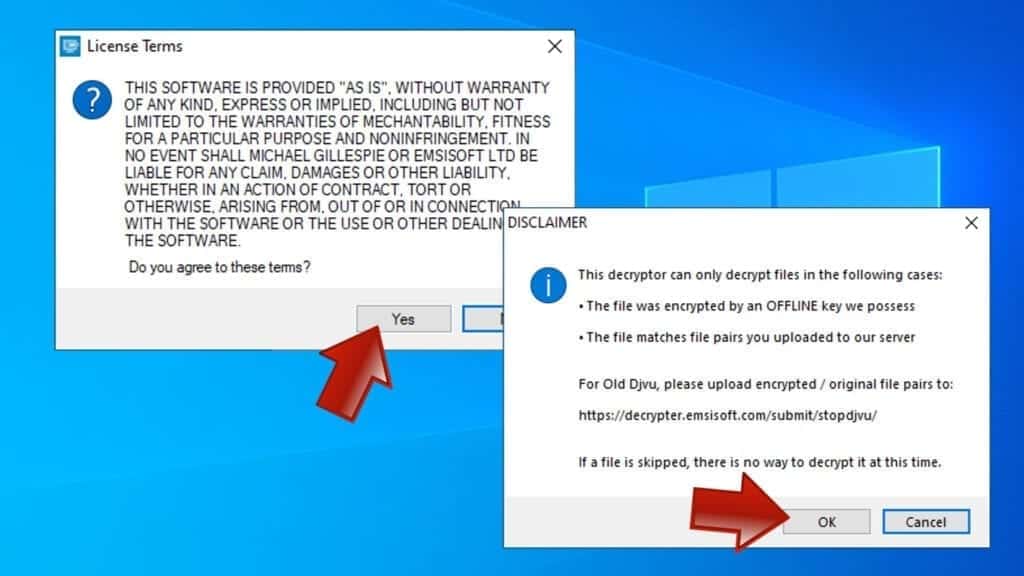
- The tool will automatically include C:// disk as a location to decrypt. The file recovery tool will prepopulate the locations to scan, including connected data storage drives or network drives. Click Add folder if you wish to add additional locations.
In Options tab, you can choose to keep encrypted file copies. We recommend leaving this option selected, especially if you do not know if the decryption tool will work.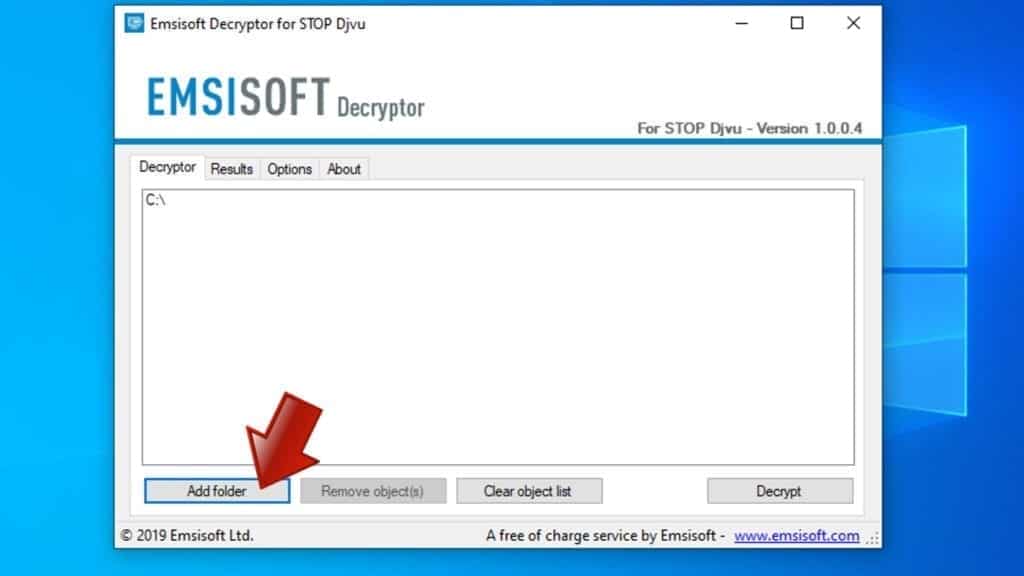
- Click Decrypt to start restoring ZZLA files. You will see the progress in the Results tab. Here, you can see messages from the tool, such as whether the decryption procedure is successful, or you need to wait for an update.
You might also be informed that online key was used to encrypt your files. In such case, the decryption tool won't work for you, and the only way to recover your files is to use a data backup.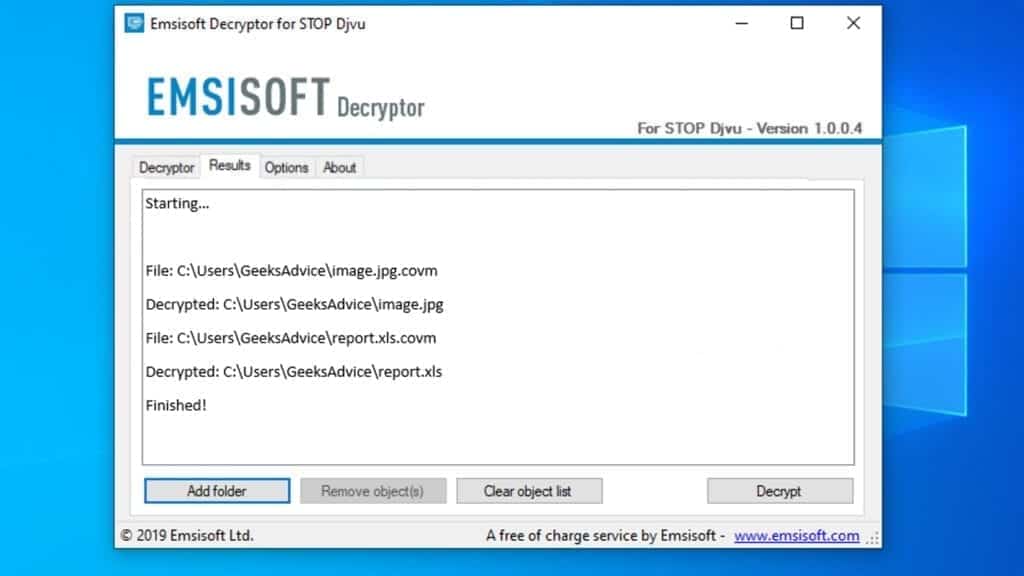
Meanings of decryptor's messages
The ZZLA decryption tool might display several different messages after failed attempt to restore your files. You might receive one of the following messages:
Error: Unable to decrypt file with ID: [example ID]
This message typically means that there is no corresponding decryption key in the decryptor's database.
No key for New Variant online ID: [example ID]
Notice: this ID appears to be an online ID, decryption is impossible
This message informs that your files were encrypted with online key, meaning no one else has the same encryption/decryption key pair, therefore data recovery without paying the criminals is impossible.
Result: No key for new variant offline ID: [example ID]
This ID appears to be an offline ID. Decryption may be possible in the future.
If you were informed that an offline key was used, but files could not be restored, it means that the offline decryption key isn't available yet. However, receiving this message is extremely good news, meaning that it might be possible to restore your ZZLA extension files in the future. It can take a few months until the decryption key gets found and uploaded to the decryptor. We recommend you to follow updates regarding the decryptable DJVU versions here. We strongly recommend backing up your encrypted data and waiting.
Report Internet crime to legal departments
Victims of ZZLA ransomware virus should report the Internet crime incident to the official government fraud and scam website according to their country:
- In the United States, go to the On Guard Online website.
- In Australia, go to the SCAMwatch website.
- In Germany, go to the Bundesamt für Sicherheit in der Informationstechnik website.
- In Ireland, go to the An Garda Síochána website.
- In New Zealand, go to the Consumer Affairs Scams website.
- In the United Kingdom, go to the Action Fraud website.
- In Canada, go to the Canadian Anti-Fraud Centre.
- In India, go to Indian National Cybercrime Reporting Portal.
- In France, go to the Agence nationale de la sécurité des systèmes d’information.
If you can't find an authority corresponding to your location on this list, we recommend using any search engine to look up "[your country name] report cyber crime". This should lead you to the right authority website. We also recommend staying away from third-party crime report services that are often paid. It costs nothing to report Internet crime to official authorities.
Another recommendation is to contact your country's or region’s federal police or communications authority.
Frequently Asked Questions
You can only open ZZLA files if you have the decryption key, or if you were affected by offline encryption type.
To figure out whether you were affected by offline encryption, please go to C:/SystemID/PersonalID.txt and see if the string inside of it ends in t1. You can also try using Emsisoft Decryptor for STOP/DJVU.
Please follow the guidances provided by the official ZZLA decryption tools and believe what they say. If they say it is impossible to decrypt, it really is so. There is no magic tool or human capable of decrypting your files hiding somewhere. Encryption is a technique created to be nearly impossible to decrypt without a special private key (held by the criminals).
We advise scanning with anti-virus, anti-malware, malware removal tools or software like RESTORO to eliminate virus damage on the system. If you do not trust using a single tool, try running one after another. However, we do not recommend keeping several security programs on a computer at once as they can interfere with each other's work.
Beware of fake ZZLA decryption tools circulating around the web. Cyber criminals are uploading them to various shady websites, also might be promoting them via suspicious Youtube videos. These programs can infect your computer even more heavily (Trojans, miners, etc.). We suggest being extremely cautious around the web. If there will be an official STOP/DJVU decryption tool available, it will be widely discussed in public media.

Norbert Webb is the head of Geek’s Advice team. He is the chief editor of the website who controls the quality of content published. The man also loves reading cybersecurity news, testing new software and sharing his insights on them. Norbert says that following his passion for information technology was one of the best decisions he has ever made. “I don’t feel like working while I’m doing something I love.” However, the geek has other interests, such as snowboarding and traveling.
Leave a Reply